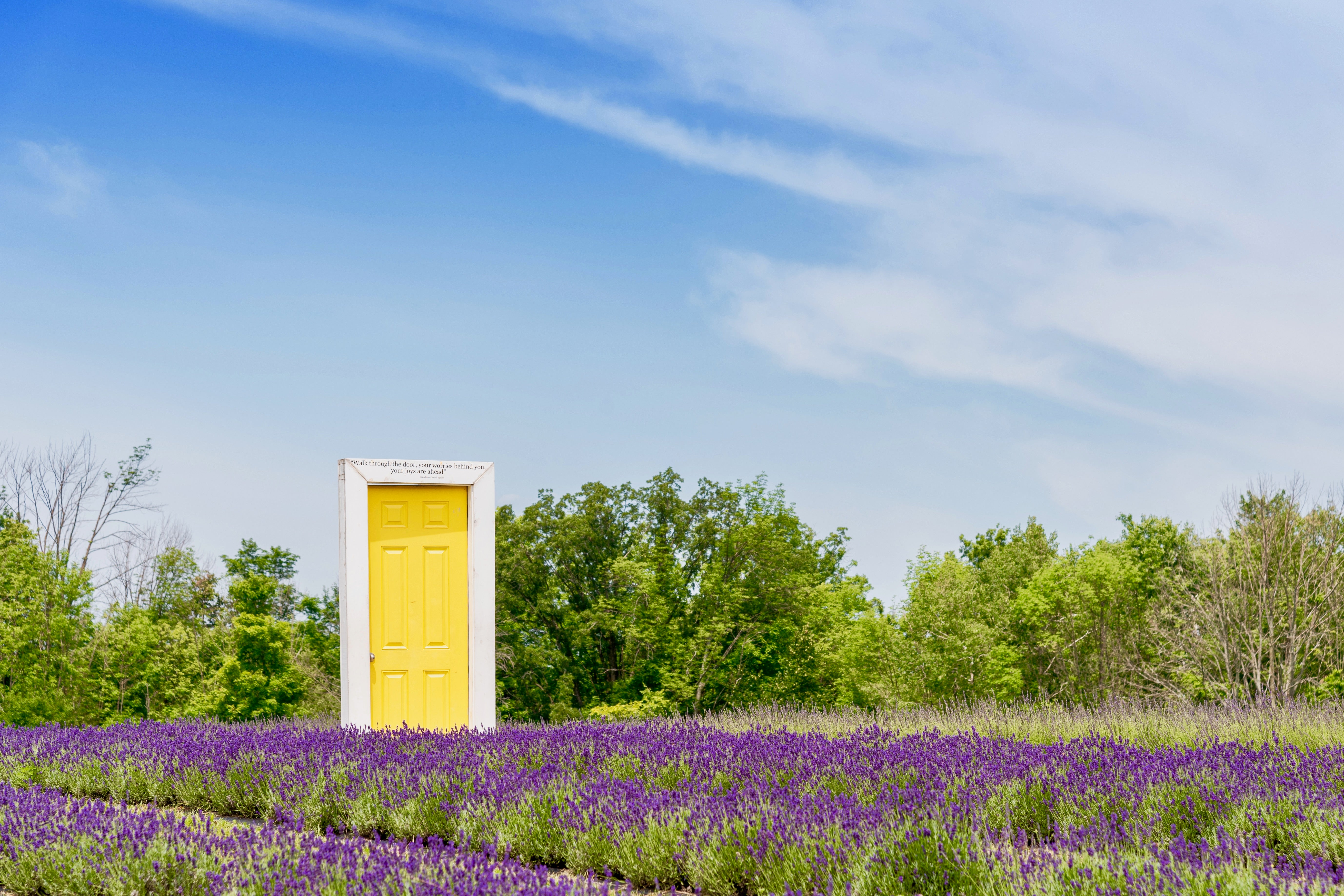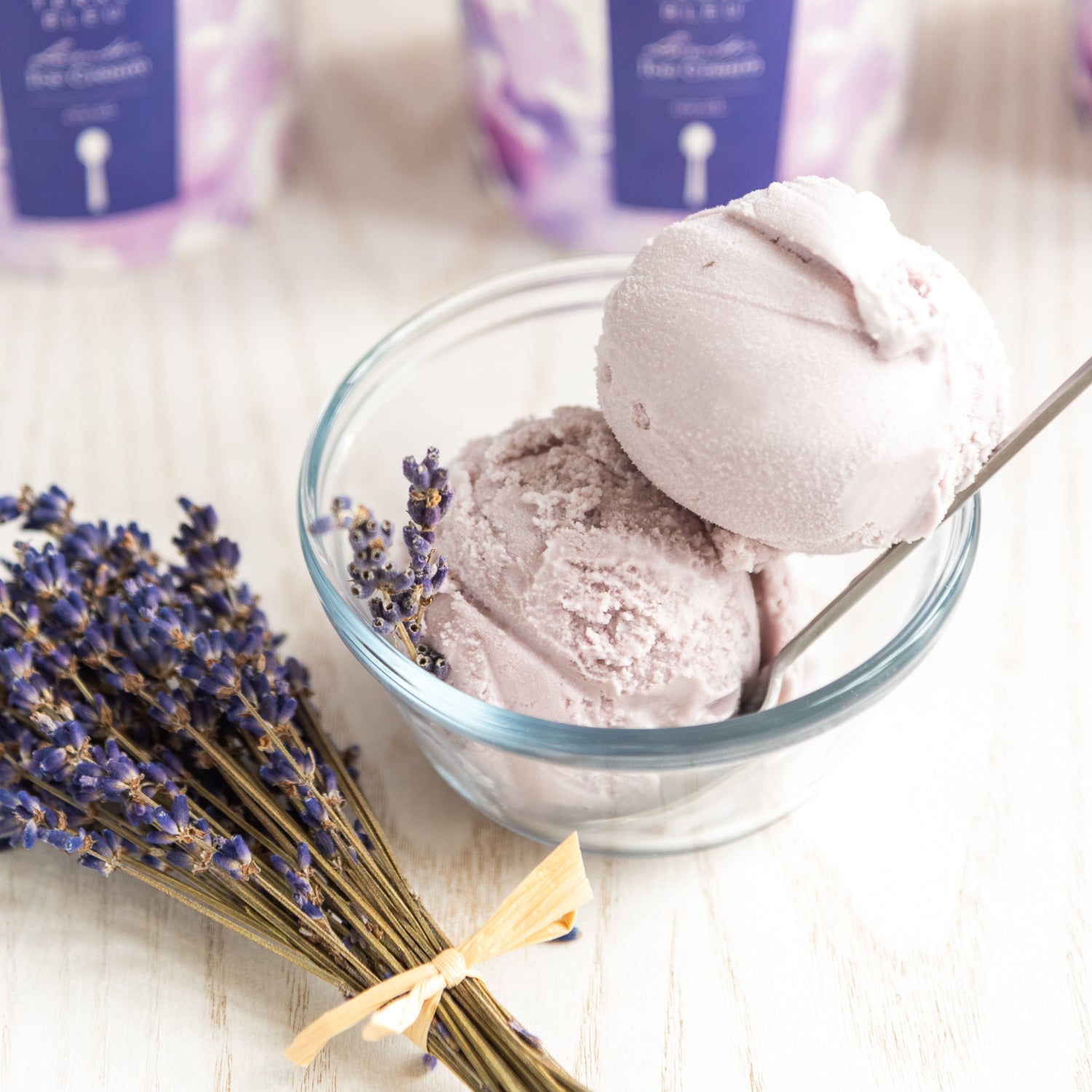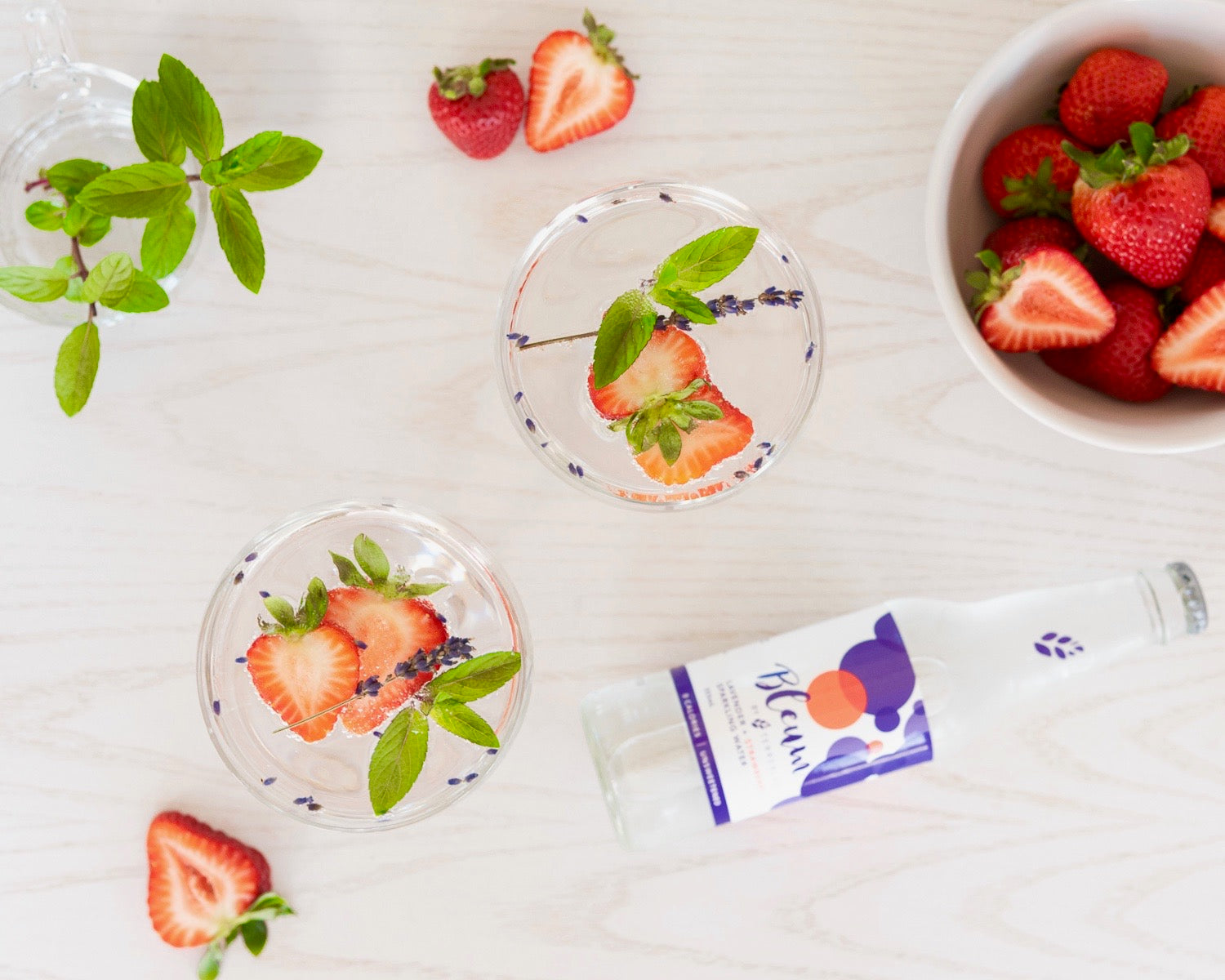Well-manicured rows of vibrant lavender stretch into the vanishing point to meet crisp blue skies sprinkled with cotton candy clouds.
No, this isn’t the lavender fields of Provence. This isTerre Bleuin Milton, Ontario—one of the largest organic lavender agritourism farms in Canada.
Opened to the public in 2014, owners Ian and Isabelle Baird left behind flourishing careers in the heart of Toronto to live out their dream of owning a farm. The Bairds found their way with lavender and have created a loyal customer base from the ground up, despite being new to the agritourism industry and having little to no farming experience. Below, they share lessons learned along their journey, as they built a social media following, used an online store to help expand their sales beyond the bloom season, and created experiences that bring visitors back again and again.
Grow your social following before you launch
Agritourism offers a way for visitors to temporarily abscond from a modern, fast-paced lifestyle that may not leave much time to connect with nature. Terre Bleu is a hideaway where patrons can stop and smell the metaphorical roses—and the literal lavender—and speaks to the land’s inherent charm in a consistent way, from physical experiences to digital campaigns.
In the heart of the farm, visitors are met with the famous yellow door that asks them to shed their worries before entering.

Before lavender became the farm’s signature, the area served as a simple hay field. It took the Bairds nearly three years to build out Terre Bleu to the landmark it is today. Ian and Isabelle used this long developmental period to their advantage and shared their journey onsocial mediabefore opening their doors to the public.
“After we began planting lavender, we started building social media campaigns to attract attention to the business. We created a fair-sized following before we even opened the farm to the public.”

Initially, Ian and Isabelle chronicled their farming journey on Facebook, later expanding to Instagram. Through their photos and posts, they gave followers a glimpse of idyllic life on the farm, with snapshots of colts and horses, striking early evening sunsets, the change of seasons and, of course, tag-along updates from Terre Bleu. This early dedication to social media helped establish an impressive collective audience of more than 80,000 followers. Now, the Bairds are focused on sustaining that momentum, as social remains the main way new visitors discover the farm.

Additional products and services for visitors
Terre Bleu’s digital footprint quickly drew in-person visitors who flocked to the farm to experience first hand the sights and senses that couldn’t be replicated in photographs. For Terre Bleu, that meant catering to a significant crowd in a relatively tight time frame. The vibrant summer months draw the most people, as visitors try to catch the lavender fields in full bloom.

“We basically drive all of our business in about a two-month window,” says Ian. “It’s a risky proposition, banking on the weather, the plants, and being able to pull in enough revenue in a very short period of time to sustain us for the rest of the year.”
Instead of relying on admission fees as their sole revenue stream, the Bairds diversified. The farm’s onsite “Herb Bar” offers ice cream, mocktails, and shortbread—all of which are infused with their farm-grown organic lavender. Visitors can also take home lavender-based body care products, like bath soaks, body scrubs, and facial mists.

baird继续发芽新的可持续的opportunities for seasonal sales, sometimes turning other nooks and crannies of the farm into their own distinct destinations.
“There were ruins on our farm that we have turned into a beautiful area for people to have a drink and try some of our newer products,” Ian says. “We are also launching a new lavender and strawberry sparkling water and our lavender ice cream in pint-sized containers.”

Create reasons for repeat visits
Like many tourist attractions, Terre Bleu needs a steady influx of new visitors to cultivate and grow its business. However, Ian and Isabelle also recognized that strong relationships with friends and fans of the farm could serve as the foundation for repeat visits—and purchases. By getting to know what their customers want to do and see, they createdin-person events aimed at drawing visitors back again and again.

“We have anevent calendar app on Shopify, and it allows us to promote events like yoga classes, which have become very popular for us,” Ian says. “Other events on the farm we conceived to make use of the exquisite scenery. We offer forest meditation and nature classes, and there’s a whole stream for people doing commercial photography here, which they can book online.”

The Bairds have expanded beyond their initial roots, broadening their selection of signature crops and tailoring the land to grow their list of attractions. “We planted hundreds of thousands of sunflowers that people can explore,” Ian says. “And we planted fields of chamomile and Thalia, which is another beautiful purple flower. We’re all about fields of color.”
Developing sales and products during the offseason
Ian and Isabelle’s business period initially was restricted to lavender’s two-month bloom season. In order to flourish year-round, the duo turned to selling their products online. Their Shopify store now drives 20% of their overall revenue during offseason.
“We can now sell products through the winter. We even participated in Black Friday last year, and it worked really well for us, at least in an introductory fashion.”

The less hurried months outside of the bloom season also free up time for additional product development. Terre Bleu now has an on-site distillery, complete with a copper still, used to produce lavender oil from the farm’s organic crops. Last winter, the Bairds also crafted a lavender sparkling water.

Staying relevant throughout the year
With such a short time frame available to interact with visitors face to face each year, the Bairds quickly recognized the importance of creating ways to stay connected with their customers throughout the rest of the year. To complement their existing social media channels, Ian and Isabelle turned toemail marketing给他们提供派遣更多的机会personalized messagesand to cater to their biggest fans.

“We have what we call the Friends of the Farm program, where we send special promotions, recipes, and new uses for our different products,” Ian says. Using an app from theShopify App Store, Terre Bleu’s first foray intoemail marketingled to satisfying results. “The emails are very well received, and we get a high conversion rate.”
Spread the story
Friends of the farm obviously are drawn to the spectacle of Terre Bleu, but many outside the farm’s main geographic market find themselves just as intrigued about Ian and Isabelle’s story.
Ian and Isabelle’s unique backgrounds coupled with their success in founding a sustainable agritourism farm—a pursuit that’s hard not to admire—was a recipe potent enough to attract international attention. “Our website got a lot of hits internationally from people outside of the targeted local audience,” Ian says. “Princeton University even visited us a little while ago because of what they saw online. They're writing a book about modern sustainable farming and wanted to feature how we work and our approach to the business. Facebook has stopped by a few times to do a feature on the farm as well.”

The next harvest
The cyclical nature of farming means there’s a lot of work required to maintain what you’ve already grown. But each harvest brings the opportunity to plant new seeds. Ian and Isabelle’s next major focus is providing education on sustainable farming and showcasing more of their work within the modern farming space.
“We want to educate people about agriculture in today's environment. How to do sustainable organic agriculture that is pesticide and herbicide free. All these things are more costly and more labor-intensive, but when we talk about this, people get behind it and support it. Last year, we started a ban on plastic straws and plastic lids, and it exploded on social media.”

The Bairds also are committed to sharing the bounty of their future harvests with others. “We're big on supporting other businesses,” says Ian. “We've built a brand that allows us to collaborate locally.” As they welcome each bloom season, they ultimately want to “spread the wealth amongst the community” and celebrate each harvest with those who made Terre Bleu’s success possible.

